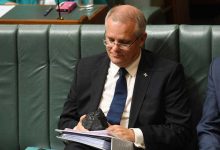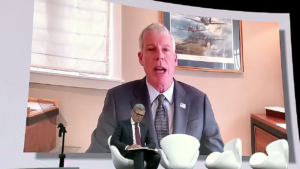New analysis from BloombergNEF (BNEF) shows that the rising cost of coal power generation in Australia’s is the primary – yet often overlooked – cause of the recent doubling of power prices on the National Electricity Market (NEM).
The new analysis from BNEF confirms that thermal coal power prices have doubled in two years, and in turn caused a doubling in the price of coal capacity in the NEM, so much so that wind and solar are now lower than even just the short-run cost of thermal coal from the spot market. The short run cost does not include the money spent on building a coal plant.
“This means that it is already cheaper to build a new solar or wind plant than burn export-linked coal in an existing, fully depreciated, coal plant,” BNEF analyst Ali Asghar says.
“The current wave of solar and wind farms under construction should therefore put downward pressure on power prices when they become operational in 2019-20 and should also soften the impact of international fuel prices on domestic power.
“Wind and solar are the electricity market’s hedge against exposure to rising international coal or gas prices.”
This graph above shows the dramatic shift in the last two years, when new wind and solar plants clearly cost more than existing coal generators, but because of their falling price, and coal’s rising price, the two are now around the same cost.
The BNEF analysis contradicts almost everything you will hear from the fossil fuel industry, the government and conservative commentators. But it follows its recent global analysis that showed that the price of wind and solar is now cheaper than coal generation around the world, and in Australia.
It also confirms the recent conclusions by Snowy Hydro that “firm” wind and solar obtained in its recent tender was “cheaper than current baseload”, meaning coal generation, and similar observations from origin Energy and AGL, which says it is cheaper to build new cleaner technologies than try to extend the life of Liddell coal generator.
Of course, if coal is not setting the wholesale price of electricity in Australia, it is likely to be gas, which is even more expensive. There are, however, a few occasions when the sheer weight of wind and solar prices pushes the market down to midday lows, or even negative prices, as we have seen in Queensland, Western Australia, and just this past weekend in South Australia.
The BNEF report also comes as a new analysis from Carbon Tracker found that nearly half of all coal generators in the world were running at a loss, one third of them were more expensive to run than building new wind and solar plants, and by 2030 that percentage would rise to 96 per cent.
It found that China could save $US389 billion by closing plants in line with the Paris Climate Agreement instead of pursuing business as usual plans; the EU could save $US89 billion; the US could save $US78 billion; and Russia could save $US20 billion.
Matt Gray, head of power and utilities at Carbon Tracker, said the analysis “provides a blueprint” for policymakers, investors and civil society”
“Lobbying and cronyism, that’s the only thing that can save coal, and we are seeing that from Donald Trump and others throughout the world,” he told The Independent.
![]() The Carbon Tracker report included this fascinating table (above) which suggests that Australia may have reached inflection point 3, where new “firm” renewables is cheaper than existing coal, if the Snowy Hydro tender is a guide.
The Carbon Tracker report included this fascinating table (above) which suggests that Australia may have reached inflection point 3, where new “firm” renewables is cheaper than existing coal, if the Snowy Hydro tender is a guide.
This is despite the fact the federal government has not yet realised that it has reached inflection point 1, let alone inflection point 2, which is where it should be putting together a plan to exit coal.
Back to the BNEF study. This graph below indicates in more detail how the rising costs of coal are having an impact in the bidding patterns of coal generators, and in turn on wholesale prices.
BNEFs Asghar notes that the price of coal generation has doubled from 2016 levels, in line with seaborne thermal coal prices. Since black coal currently makes up some 54 per cent of the NEM’s energy mix – up from 51 per cent in 2016 – this increase in the cost of coal generation is one of the most important, yet overlooked, factors driving up power prices.
BNEF’s new analysis – ‘2H Australia Power Market Outlook’ – says the rise in coal prices is primarily due to increased demand for Australian coal in Asia. Depending on the grade, seaborne thermal coal prices have risen from A$55-75 per metric ton in early 2016 to A$90-160/ton in August 2018.
This has been acknowledged previously by Origin Energy (see our podcast interview with head of markets Greg Jarvis here), and on numerous occasions by regulator Contributor David Leitch in his NEM Watch series.
“Black coal generators are producing more power following the closure of several brown coal plants in 2016 and 2017, forcing operators to source more fuel at spot market prices that have risen sharply,” Asghar says.
“The result is that they have to charge more for their power. Thousands of megawatts of coal capacity that was offered at A$20-40 per megawatt-hour of electricity during most of 2016 is now made available for A$40-60 per MWh.”












